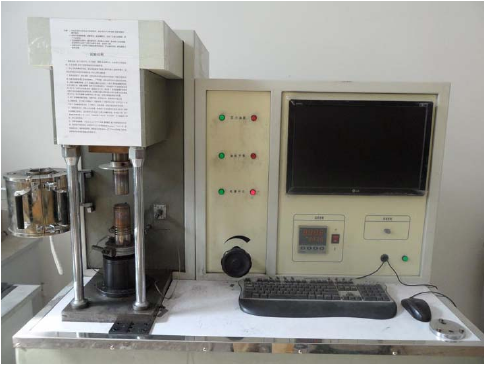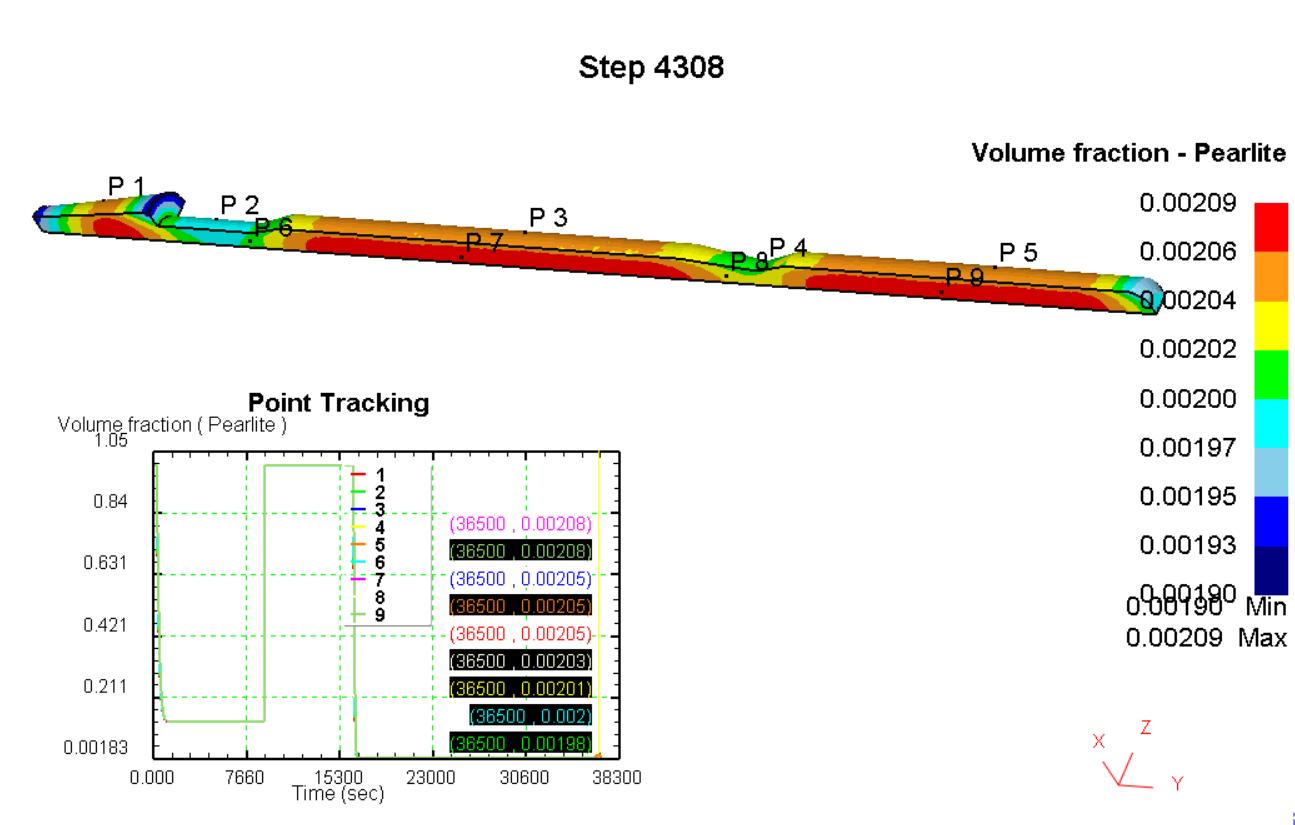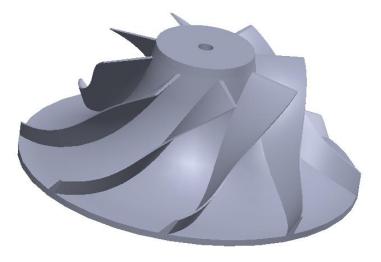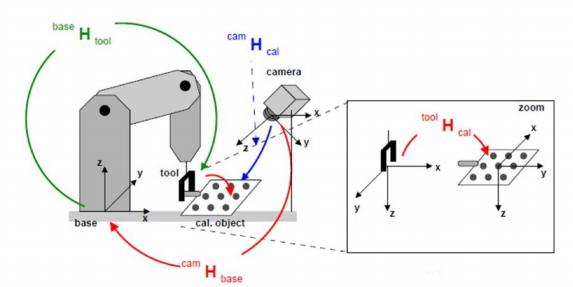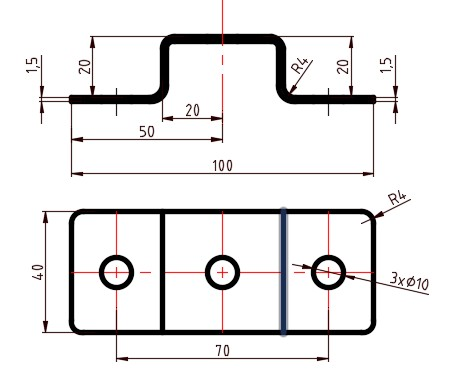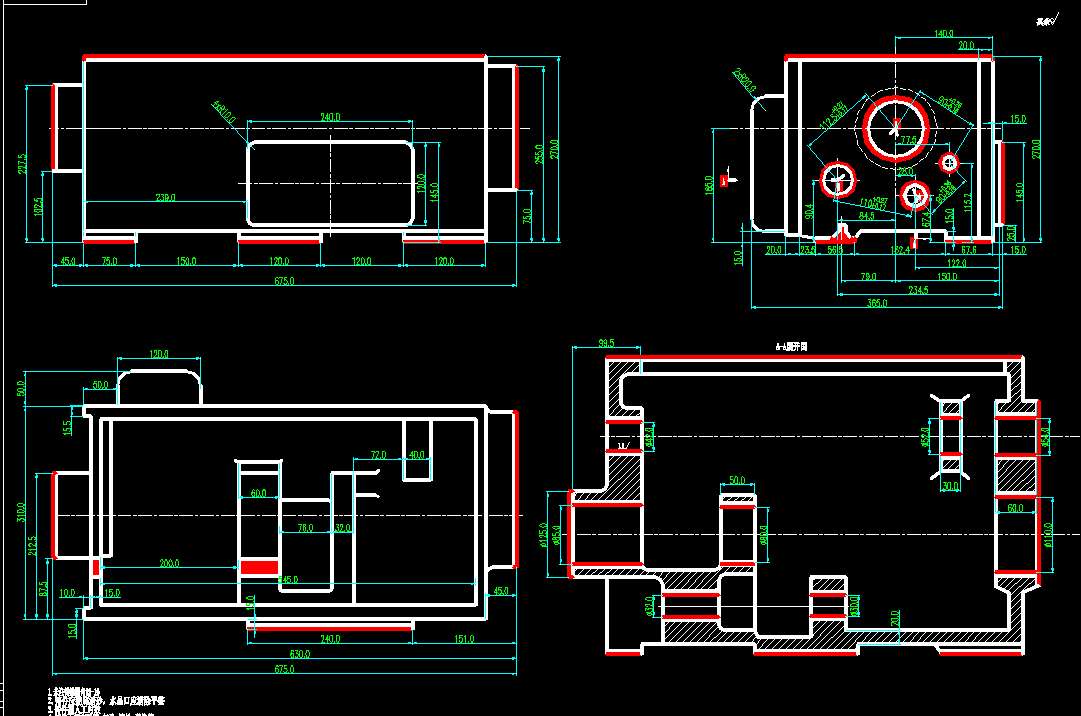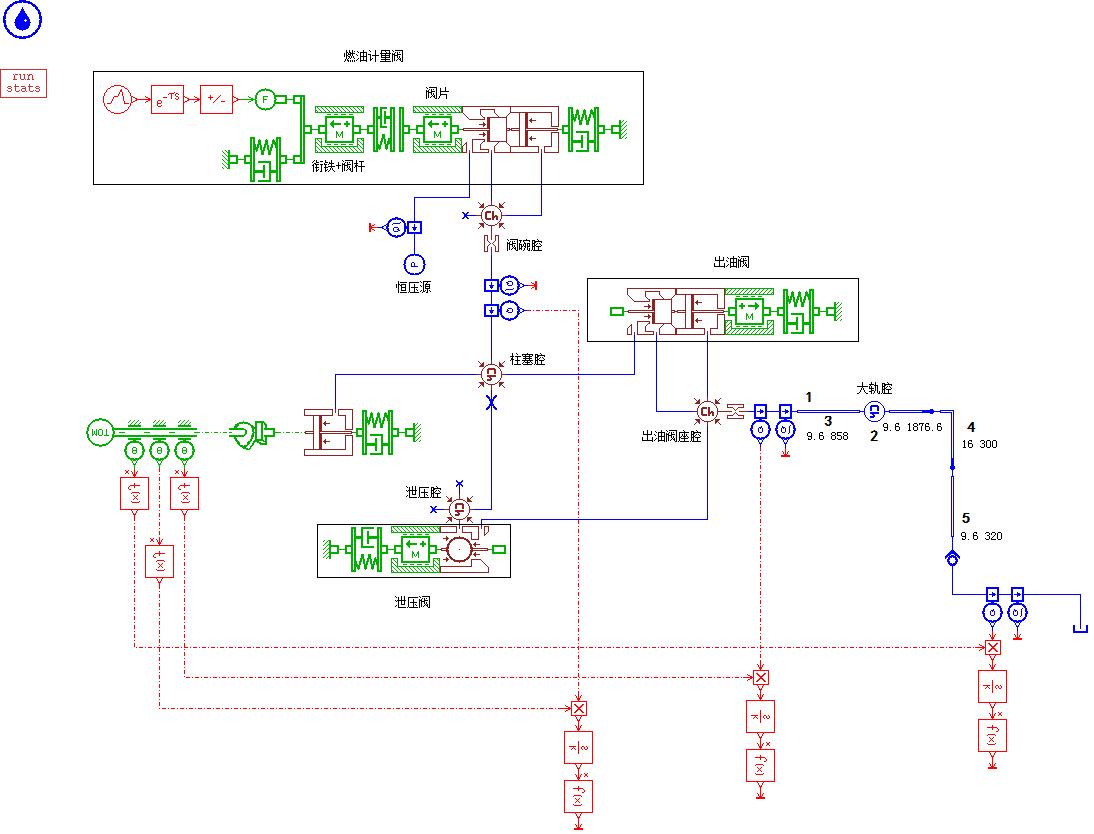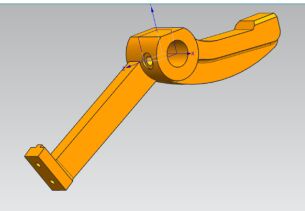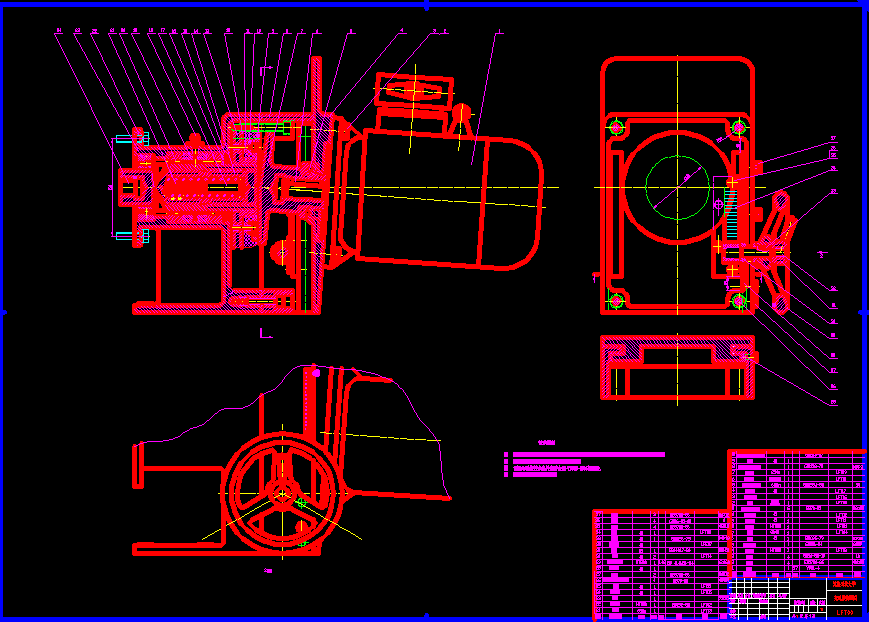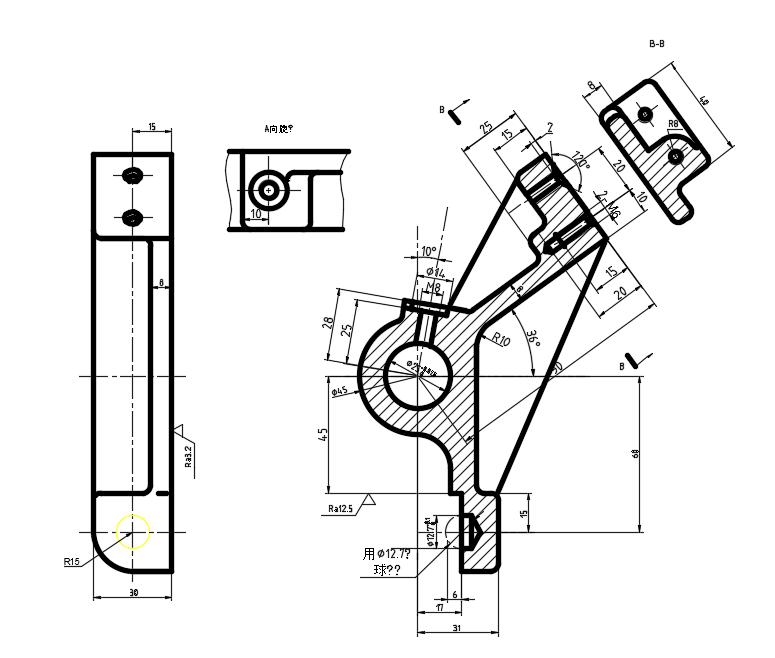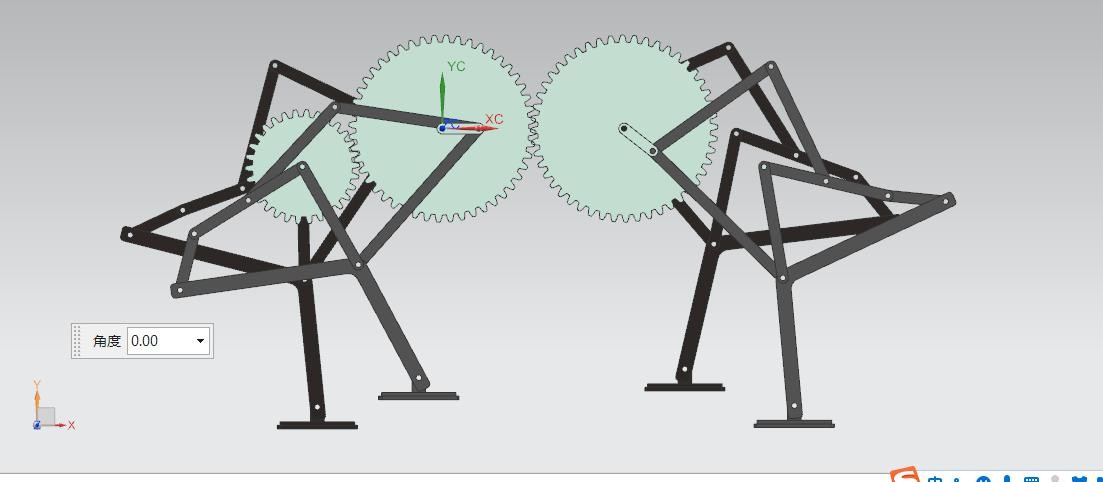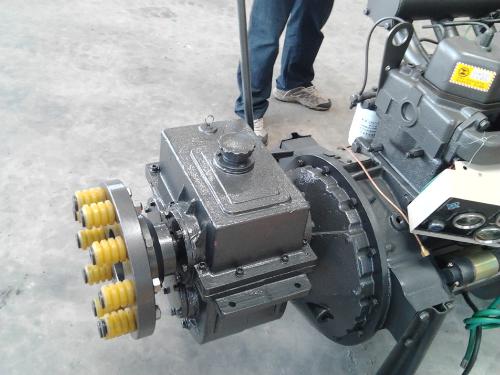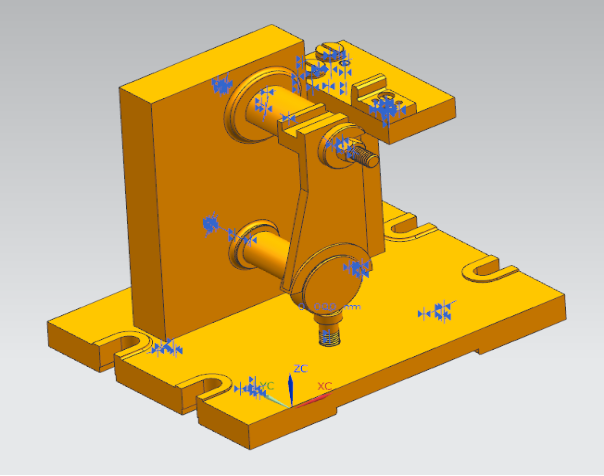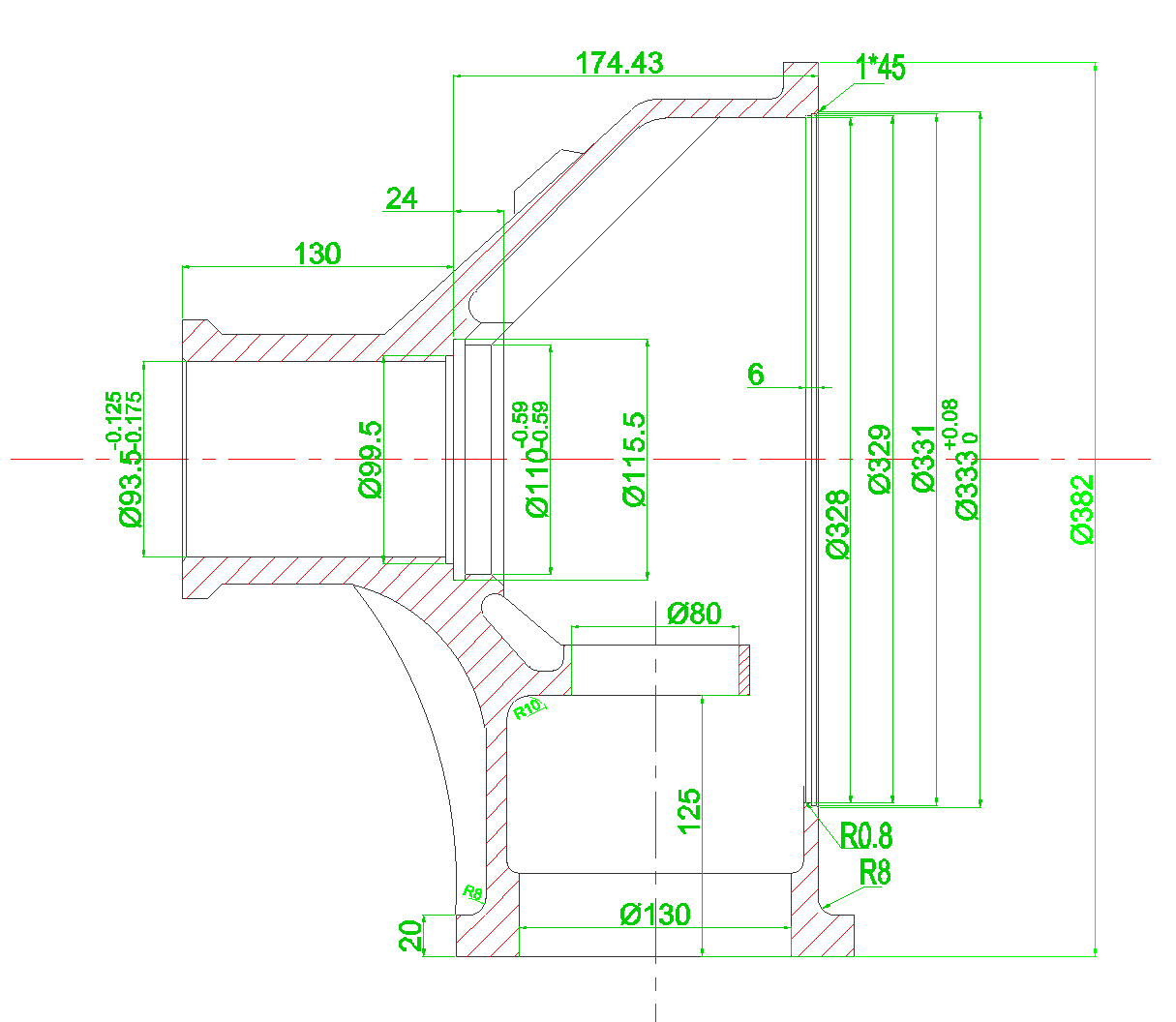苏ICP备112451047180号-6
奥-贝球铁及贝氏体钢耐磨性能的对比试验
摘要:奥-贝球铁以及贝氏体钢的铸造及热处理工艺、组织及性能是本文的重心。主要讨论了奥-贝球铁组织及性能在等温淬火介质不同、盐浴等温淬火温度不同和时间的影响。探讨了氢和残余奥氏体在贝氏体钢中的作用,在工业生产中,把含碳量2.2%球铁的碳化物消除的主要途径是980℃保温8小时,再与含碳量3.6%的球铁混合,900℃奥氏体化环境保温60分钟,加之50分钟330℃盐浴等温淬火,可得到主要基体为贝氏体,抗拉强度>1000Mpa,硬度350HV上下,综合性能较为良好的贝氏体球铁。而贝氏体钢的化学成分特点是在低、中碳含锰钢的基础上加入少量的Mo(<0.5%)或微量的Be(0.002%),导致铁素体珠光体转变曲线出现大幅度右移。却几乎不造成对贝氏体曲线的影响,使钢经奥氏体化处理后空冷即可获得贝氏体组织。最后,对奥-贝球铁及贝氏体钢的耐磨性能进行多次试验并加以对比,深入探讨并分析了两种常见金属材料的耐磨机理,最终得出以下结论:
1、奥-贝球铁中石墨消耗较为方便,若石墨含量较高,则基体组织连续性容易被打断,可视作基体组织碎裂之源,由此消极了奥-贝球铁的耐磨性。含碳量与石墨球的数量呈正比,因此提高奥-贝球铁的耐磨性的一种方式就是适当降低含碳量。
2、低应力的磨损可以较好体现奥-贝球铁的耐磨性。同时低应力磨损表面的犁沟、切削划痕与裂纹表明了切削磨损是主要因素,冲击塑性变形磨损是次要因素。
3、在可控的氢含量范围内,氢可以明显提高贝氏体钢的耐磨性。贝氏体钢的磨损形式是400N及以下载荷为磨粒磨损,400N以上1000N以下为粘着磨损。同时氢对于降低贝氏体钢中残余奥氏体稳定性的效果极为良好。磨损的情况下,氢促进了贝氏体钢中残余奥氏体相出现应变,诱发了马氏体相变,从而大大提高了贝氏体钢磨损的表面硬度。在加工硬化和应变的共同作用下,贝氏体钢的抗磨损能力得以增强。
关键词:球墨铸铁;奥-贝球铁;残余奥氏体,磨损;贝氏体钢
Comparative Test on Wear Resistance of Austempered Ductile Iron and Bainitic Steel
Abstract: Austenite Bainite Ductile Iron as well as the process, microstructure and properties of casting and heat treatment of the steel is the focus of this paper. Mainly discusses the effect and properties of Austempered Ductile Iron, isothermal quenching medium in different austempering temperature and time. To investigate the effect of hydrogen and residual austenite in the Bainitic Steels, in industrial production, the main way of carbon content of 2.2% ductile iron carbide elimination is 980℃for 8 hours, then 3.6% and the carbon content of the austenite ductile iron mixed, 900℃ environmental heat for 60 minutes, and 50 minutes at a temperature of 330℃ salt bath isothermal quenching, can get the main base for bainite, tensile strength more than 1000Mpa, hardness 350HV, bainite ductile iron is a good comprehensive performance. The chemical composition characteristics of Bainitic Steel is added in low and medium carbon steel containing manganese based on a small amount of Mo (<0.5%) or trace amounts of Be (0.002%), resulting in ferrite pearlite transformation curve greatly. But almost has no influence on the bainite curves, the steel after austenitizing treatment after air cooling bainite can be obtained. Finally, the wear resistance of the Austenite Bainite Ductile Iron and steel are tested and compared, in-depth study and analysis of the two kinds of common metal materials, wear mechanism, finally draws the following conclusion:
1, in Austempered Ductile Iron graphite consumption more convenient, when the graphite content is higher, it is easy to be interrupted the continuity of the matrix organization, matrix organization can be regarded as the source of the fragmentation, the negative resistance to wear of Austempered Ductile Iron. Proportional to the number of carbon content and Graphite Spherule, so one way to improve the wear resistance of austempered ductile iron is appropriate to reduce the amount of carbon.
2, wear can reflect the low stress abrasion resistance of Austempered Ductile Iron. At the same time, the low stress abrasion on the surface of the furrow, scratches and cracks that cutting the cutting wear is the main factor, the impact of plastic deformation wear is the secondary factor.
3, in the range of hydrogen content and controllable, hydrogen can significantly improve the wear resistance of Bainitic Steels. The wear form of Bainite Steel is 400N and the load to abrasive wear, adhesion wear more than 400N below 1000N. At the same time to reduce the stability of Retained Austenite Bainite Steel hydrogen in the effect is very good. Wear condition of Residual Austenite Bainite Steel in hydrogen enhanced phase strain induced martensite phase transformation, thus greatly improve the surface hardness of Bainite Steel wear. In the common role of strain hardening and strain, steel wear resistant ability is enhanced.
Key Words;Nodular cast iron:Austempered Ductile Iron;Residual austenite;Wear;Bainitic Steel
目录
封面………………………………………………………………………1
开题报告…………………………………………………………………2
任务书……………………………………………………………………5
摘要………………………………………………………………………6
Abstract………………………………………………………………….7
第一章绪论……………………………………………………………11
1.1奥-贝球墨铸铁及贝氏体钢简介……..………………………………….11
1.1.1奥-贝球墨铸铁简介…………………………...….…………………11
1.1.2奥-贝球墨铸铁性能特点及应用…………...……..……………………12
1.1.3奥-贝组织形成原理..............................................................................15
1.1.4贝氏体钢简介………………..............................................................16
1.1.5贝氏体钢性能特点及应用…………………………………………….18
1.2奥-贝球墨铸铁生产工艺………………...……………………………..19
1.2.1铸态奥-贝球墨铸铁生产工艺………………...……………………….19
1.2.2等温淬火工艺…………………………..……………………………19
1.2.3准铸态奥-贝球墨铸铁生产工艺.............................................................20
1.3材料的摩擦磨损…………….………..………………………………..20
1.3.1摩擦及磨损现象…………..………………………………………….20
1.3.2磨损原理及影响因素……………….………………………………...21
1.4本论文研究意义和内容……………...…………...…………………….22
第二章试验内容与方法………………………………………………23
2.1试验材料的选用…………...…………………………………………..23
2.1.1 奥-贝球墨铸铁材料的选用………...………………………………...23
2.1.2 贝氏体钢材料的选用…….…………………………………………..24
2.2试验用材料制备……………...………………………………………..24
2.3热处理工艺选择……………………………………………………….25
2.3.1奥-贝球墨铸铁热处理工艺…………………...….…………………...25
2.3.2贝氏体钢热处理工艺…………………………….…………………...26
2.4磨损试验机选择………..……………….…………..…………………26
2.5金相试样………………………………………………………………27
2.6硬度测试………………………………………………………………28
2.7拉伸试样………………………………………………………………28
2.8电子显微组织观察(SEM)……………………………………………..28
2.9 XRD分析(X射线分析)………………………………………………28
2.10充氢………………………………………………………………….28
第三章 奥-贝球铁与贝氏体钢的耐磨性探究………..………………30
3.1等温淬火工艺对奥-贝球铁组织及耐磨性的影响……...…………………30
3.1.1等温淬火温度对奥-贝球铁组织的影响……………..…………………30
3.1.2等温淬火温度对奥-贝球铁耐磨性的影响……………………………...31
3.1.3奥-贝球铁X射线衍射结果分析……………………..………………...33
3.3贝氏体钢耐磨性试验…………………………………………………...34
3.3.1载荷对贝氏体钢的影响………………………...……………………..34
3.3.2 电子显微镜观察………………………...…………..……………….35
3.4贝氏体钢耐磨性相关因素分析………………………………………….36
3.5奥-贝球铁与贝氏体钢耐磨性的对比实验……………………………….38
结论…………………………..…………………………………………41
参考文献………………………………………………………………..42
致谢……………………………………………………………………..44
结论
1、低应力磨料磨损情况下,奥-贝球铁的耐磨性得到很好地体现。磨损表面存在犁沟、切削划痕,以及一部分的裂纹,说明在此过程中磨损的机理是切削磨损与冲击塑性变形磨损均有,且起主导作用的是切削磨损。
2、本实验所研究的为C:2.0~2.2%,Si:2.8~3.0%,Mn:0.4~0.6%的球铁,经退火处理后900℃奥氏体化环境下保温达到60min,在330℃盐浴等温淬火条件下进行50分钟,可得到主要基体为贝氏体,Rm>1000MPa,硬度在350HV徘徊,使用性能满足实际应用的奥-贝球铁。
3、在可控的氢含量范围内,氢可以明显提高贝氏体钢的耐磨性。贝氏体钢在400N及以下载荷为磨粒磨损,1000N以下为粘着磨损。同时氢可以降低贝氏体钢中残余奥氏体的稳定性。促进了贝氏体钢中残余奥氏体相中发生应变,诱发材料向马氏体相变,从而大大提高贝氏体钢磨损的表面硬度。在加工硬化和应变能力的共同作用下,贝氏体钢的抗磨损能力得以增强。
参考文献
[1](日) 井ノ山直哉,山本悟,川野丰,等. 反应论铸铁学[M],北京:机械工业出版社,2012.5.
[2]吴承建,等. 金属材料学[M],北京:冶金工业出版社,2009.8.
[3]叶学贤,等.奥氏体-贝氏体球墨铸铁论文集[C],中国机械工程学会铸造学会和武汉铸造协会.1986:335-342.
[4]曾艺成,李克锐,张忠仇.我国等温淬火球铁(ADI)生产应用及发展前景[J],现代铸铁,2007,(l):13-18.
[5]魏秉庆,等.贝氏体球墨铸铁[M],北京:机械工业出版社,2001:11-14.
[6]郑隆滨,程义,龚正春等.奥氏体-贝氏体球铁的生产研究[J],锅炉制造,2000,(8):35-36.
[7]吴德海,等.贝氏体球墨铸铁[A],特种合金铸件生产技术论文集[C],1997:1-14.
[8]李少南.马氏体-贝氏体合金球铁焊管机轧辊[J],热加工工艺,1999,(5):42-44.
[9]赵红,徐卫平,周继扬.奥氏体等温转变铸铁研究的新进展[J],铸造,2001,(5):243-248.
[10]王泽华.等温淬火球铁在铁道车辆耐磨件上的应用研究[J],铸造.2003,(7):466-471.
[11]王怀林.一汽等温淬火球墨铸铁科研与生产实践二十年[A],第三届全国等温淬火球铁(等淬球铁)技术研讨会论文集[C],2002,(11):34-41.
[12]刘建伟.柴油发动机奥-贝球铁齿轮的研究应用[A],第三届全国等温淬火球铁(等淬球铁)技术研讨会论文集[C],2002,(11):30-34.
[13]钱鲁阳.奥-贝球铁齿轮弯曲疲劳强度的试验研究[J],现代铸铁,2005,(5):13-19.
[14]刘光华,张永秀.高强度高韧度球墨铁368曲轴[A],第三届全国等温淬火球铁(等淬球铁)技术研讨会论文集[C],2002,(11):30-34.
[15]尹健,严莉等.等温淬火奥-贝球铁在块一环法磨损条件下的抗磨性[J],吉林工学院学报,1998,(6):22-25
[16]丛家瑞,曹兴言等.奥-贝球墨铸铁的接触疲劳与耐磨性能[J],现代铸铁:1988,(4):l-4.
[17]郭戟荣.球铁[M],1989(3):64-65.
[18] Dorazil E.热处理条件和化学成分对等温淬火低合金球铁机械性能的影响[J],国外铸造,1983,(5):12-18.
[19]张福成,吕博,刘辉,等.爆炸硬化ZGMn13Cu2NV 钢辙叉的组织和性能[J],机械工程学报,2008,44(6):131-136.
[20] Keown S R, Pickering F B. Some Aspects of the Occurrence of Boron in Alloy Steels [J],Metal Science,1977,11(7):225-234.
[21]方鸿生, 郑燕康, 黄进峰,等. 我国贝氏体钢的前景[J],金属热处理, 1998(7):11.
[22]康沫狂, 贾虎生, 杨延清,等. 新型系列准贝氏体钢[J],金属热处理, 1995(12):3.
[23]李风照, 敖青, 姜江,等. 超细组织空冷贝氏体钢[J],金属热处理, 1998(1):5.
[24]胡淑娥, 唐立东, 冯勇,等. 贝氏体型非调质钢的试制[J],钢铁,2003(1):66.
[25]张福成,吕博,郑春雷,等. 高锰钢和贝氏体钢辙叉失效机理及其磨面组织[J],机械工程学报,2008,44(12):232-243.
[26]周鹿宾.非调质钢和贝氏体钢的研究开发和应用[J],金属热处理,1993(11):3-9.
[27]道岔结构及部件强度的研究-AT尖轨低合金钢种的选择.铁道部科学研究院金化所研究报告,1992/3.
[28]方鸿生,薄祥正,等.贝氏体组织与贝氏体[J],金属热处理,1998(11):2~7.
[29]张福成, 郑炀曾, 吕博. 铁路辙叉专用含钨铝贝氏体锻钢[P].,CN1904121.
[30]刘金城.关于奥-贝球铁及其微观组织术语的探讨[J],现代铸铁,2002,(l):9-12.
[31]李子全,许广济,郝远,等.铸态奥氏体贝氏体球铁的初步实验研究[J],甘肃工业大学学报,1993,(9):20-25.
[32]李可青,杨迎东,张喜,等.等温淬火球铁及其在国内开发应用前景展望[J],热加工工艺,2004,(11):61-66.
[33]舒信福,廖王博,丁恒敏,等.准铸态工艺对贝氏体铸铁组织和性能的影响[J],铸造,1999,(1):15-19.
[34]戴振东,薛群基.摩擦磨损的热力学研究:现状和展望[J],中国科学E辑: 技术科学,2009,39(7):1211-1215.
[35]石德坷,郭大展,柴惠芬.奥氏体-贝氏体球铁的组织与性能[J],西安交通大学学报,Vol.17NO.2,1983:27-36.
[36]周继扬,ADI理论与实践的近代进步[J],第三界等温淬火球铁技术研讨会论文集[C]:22-26.
[37]郑春雷. 辙叉用贝氏体钢的氢脆特性及失效机理研究[D],秦皇岛: 燕山大学. 2008.
[38]材料耐磨抗蚀及其表面技术丛书.编委会主编阅[M],机械工业出版社.1990:60-61.
[39]王昭洪,吴忍畔,崔忠圻. 残余奥氏体对氢致断裂过程的影响[J],金属热处理学报,1990,12(2):48-53.
结论
1、低应力磨料磨损情况下,奥-贝球铁的耐磨性得到很好地体现。磨损表面存在犁沟、切削划痕,以及一部分的裂纹,说明在此过程中磨损的机理是切削磨损与冲击塑性变形磨损均有,且起主导作用的是切削磨损。
2、本实验所研究的为C:2.0~2.2%,Si:2.8~3.0%,Mn:0.4~0.6%的球铁,经退火处理后900℃奥氏体化环境下保温达到60min,在330℃盐浴等温淬火条件下进行50分钟,可得到主要基体为贝氏体,Rm>1000MPa,硬度在350HV徘徊,使用性能满足实际应用的奥-贝球铁。
3、在可控的氢含量范围内,氢可以明显提高贝氏体钢的耐磨性。贝氏体钢在400N及以下载荷为磨粒磨损,1000N以下为粘着磨损。同时氢可以降低贝氏体钢中残余奥氏体的稳定性。促进了贝氏体钢中残余奥氏体相中发生应变,诱发材料向马氏体相变,从而大大提高贝氏体钢磨损的表面硬度。在加工硬化和应变能力的共同作用下,贝氏体钢的抗磨损能力得以增强。
参考文献
[1](日) 井ノ山直哉,山本悟,川野丰,等. 反应论铸铁学[M],北京:机械工业出版社,2012.5.
[2]吴承建,等. 金属材料学[M],北京:冶金工业出版社,2009.8.
[3]叶学贤,等.奥氏体-贝氏体球墨铸铁论文集[C],中国机械工程学会铸造学会和武汉铸造协会.1986:335-342.
[4]曾艺成,李克锐,张忠仇.我国等温淬火球铁(ADI)生产应用及发展前景[J],现代铸铁,2007,(l):13-18.
[5]魏秉庆,等.贝氏体球墨铸铁[M],北京:机械工业出版社,2001:11-14.
[6]郑隆滨,程义,龚正春等.奥氏体-贝氏体球铁的生产研究[J],锅炉制造,2000,(8):35-36.
[7]吴德海,等.贝氏体球墨铸铁[A],特种合金铸件生产技术论文集[C],1997:1-14.
[8]李少南.马氏体-贝氏体合金球铁焊管机轧辊[J],热加工工艺,1999,(5):42-44.
[9]赵红,徐卫平,周继扬.奥氏体等温转变铸铁研究的新进展[J],铸造,2001,(5):243-248.
[10]王泽华.等温淬火球铁在铁道车辆耐磨件上的应用研究[J],铸造.2003,(7):466-471.
[11]王怀林.一汽等温淬火球墨铸铁科研与生产实践二十年[A],第三届全国等温淬火球铁(等淬球铁)技术研讨会论文集[C],2002,(11):34-41.
[12]刘建伟.柴油发动机奥-贝球铁齿轮的研究应用[A],第三届全国等温淬火球铁(等淬球铁)技术研讨会论文集[C],2002,(11):30-34.
[13]钱鲁阳.奥-贝球铁齿轮弯曲疲劳强度的试验研究[J],现代铸铁,2005,(5):13-19.
[14]刘光华,张永秀.高强度高韧度球墨铁368曲轴[A],第三届全国等温淬火球铁(等淬球铁)技术研讨会论文集[C],2002,(11):30-34.
[15]尹健,严莉等.等温淬火奥-贝球铁在块一环法磨损条件下的抗磨性[J],吉林工学院学报,1998,(6):22-25
[16]丛家瑞,曹兴言等.奥-贝球墨铸铁的接触疲劳与耐磨性能[J],现代铸铁:1988,(4):l-4.
[17]郭戟荣.球铁[M],1989(3):64-65.
[18] Dorazil E.热处理条件和化学成分对等温淬火低合金球铁机械性能的影响[J],国外铸造,1983,(5):12-18.
[19]张福成,吕博,刘辉,等.爆炸硬化ZGMn13Cu2NV 钢辙叉的组织和性能[J],机械工程学报,2008,44(6):131-136.
[20] Keown S R, Pickering F B. Some Aspects of the Occurrence of Boron in Alloy Steels [J],Metal Science,1977,11(7):225-234.
[21]方鸿生, 郑燕康, 黄进峰,等. 我国贝氏体钢的前景[J],金属热处理, 1998(7):11.
[22]康沫狂, 贾虎生, 杨延清,等. 新型系列准贝氏体钢[J],金属热处理, 1995(12):3.
[23]李风照, 敖青, 姜江,等. 超细组织空冷贝氏体钢[J],金属热处理, 1998(1):5.
[24]胡淑娥, 唐立东, 冯勇,等. 贝氏体型非调质钢的试制[J],钢铁,2003(1):66.
[25]张福成,吕博,郑春雷,等. 高锰钢和贝氏体钢辙叉失效机理及其磨面组织[J],机械工程学报,2008,44(12):232-243.
[26]周鹿宾.非调质钢和贝氏体钢的研究开发和应用[J],金属热处理,1993(11):3-9.
[27]道岔结构及部件强度的研究-AT尖轨低合金钢种的选择.铁道部科学研究院金化所研究报告,1992/3.
[28]方鸿生,薄祥正,等.贝氏体组织与贝氏体[J],金属热处理,1998(11):2~7.
[29]张福成, 郑炀曾, 吕博. 铁路辙叉专用含钨铝贝氏体锻钢[P].,CN1904121.
[30]刘金城.关于奥-贝球铁及其微观组织术语的探讨[J],现代铸铁,2002,(l):9-12.
[31]李子全,许广济,郝远,等.铸态奥氏体贝氏体球铁的初步实验研究[J],甘肃工业大学学报,1993,(9):20-25.
[32]李可青,杨迎东,张喜,等.等温淬火球铁及其在国内开发应用前景展望[J],热加工工艺,2004,(11):61-66.
[33]舒信福,廖王博,丁恒敏,等.准铸态工艺对贝氏体铸铁组织和性能的影响[J],铸造,1999,(1):15-19.
[34]戴振东,薛群基.摩擦磨损的热力学研究:现状和展望[J],中国科学E辑: 技术科学,2009,39(7):1211-1215.
[35]石德坷,郭大展,柴惠芬.奥氏体-贝氏体球铁的组织与性能[J],西安交通大学学报,Vol.17NO.2,1983:27-36.
[36]周继扬,ADI理论与实践的近代进步[J],第三界等温淬火球铁技术研讨会论文集[C]:22-26.
[37]郑春雷. 辙叉用贝氏体钢的氢脆特性及失效机理研究[D],秦皇岛: 燕山大学. 2008.
[38]材料耐磨抗蚀及其表面技术丛书.编委会主编阅[M],机械工业出版社.1990:60-61.
[39]王昭洪,吴忍畔,崔忠圻. 残余奥氏体对氢致断裂过程的影响[J],金属热处理学报,1990,12(2):48-53.
